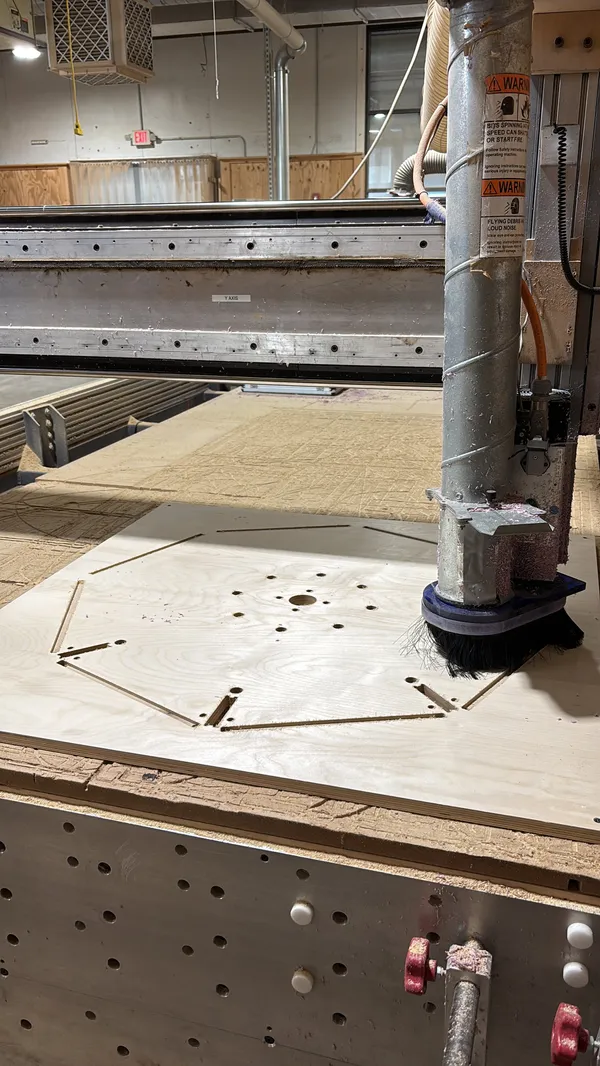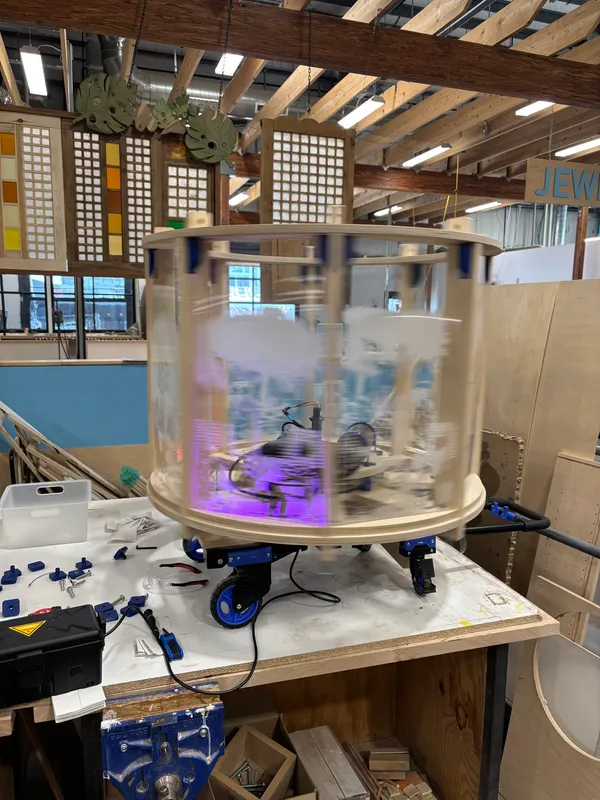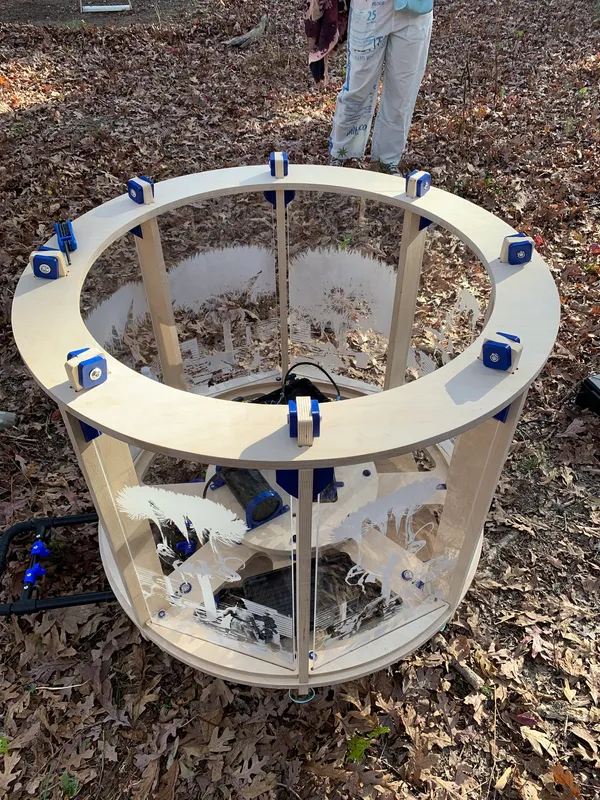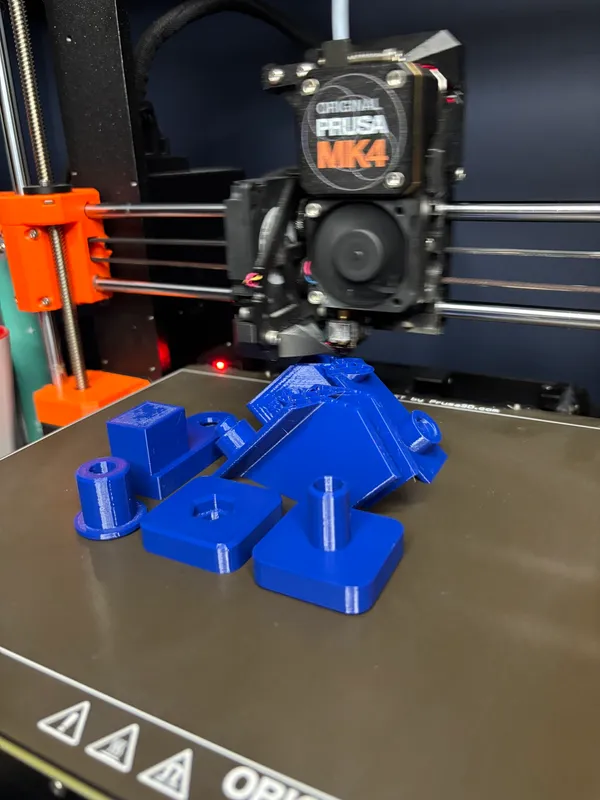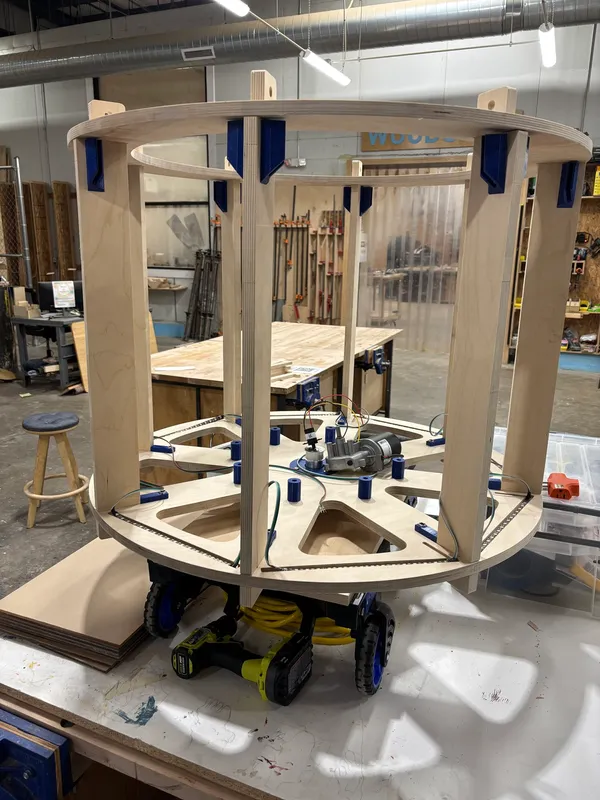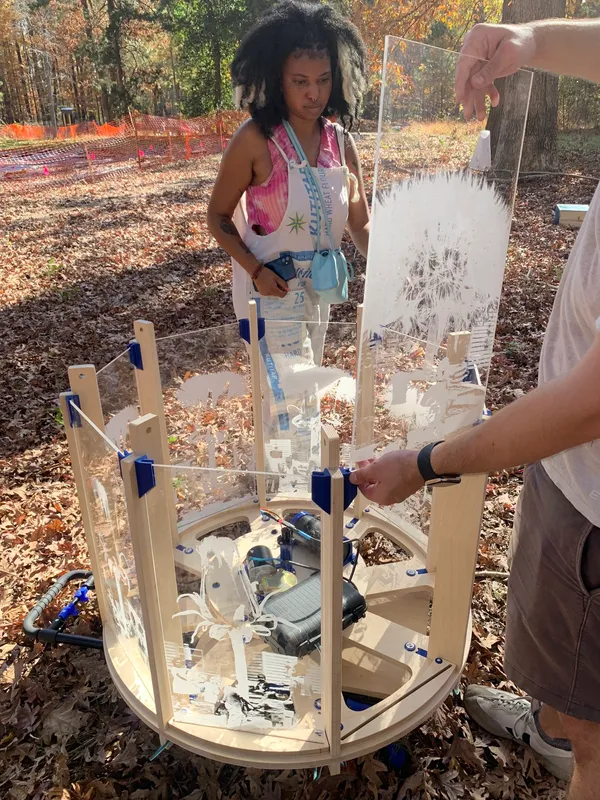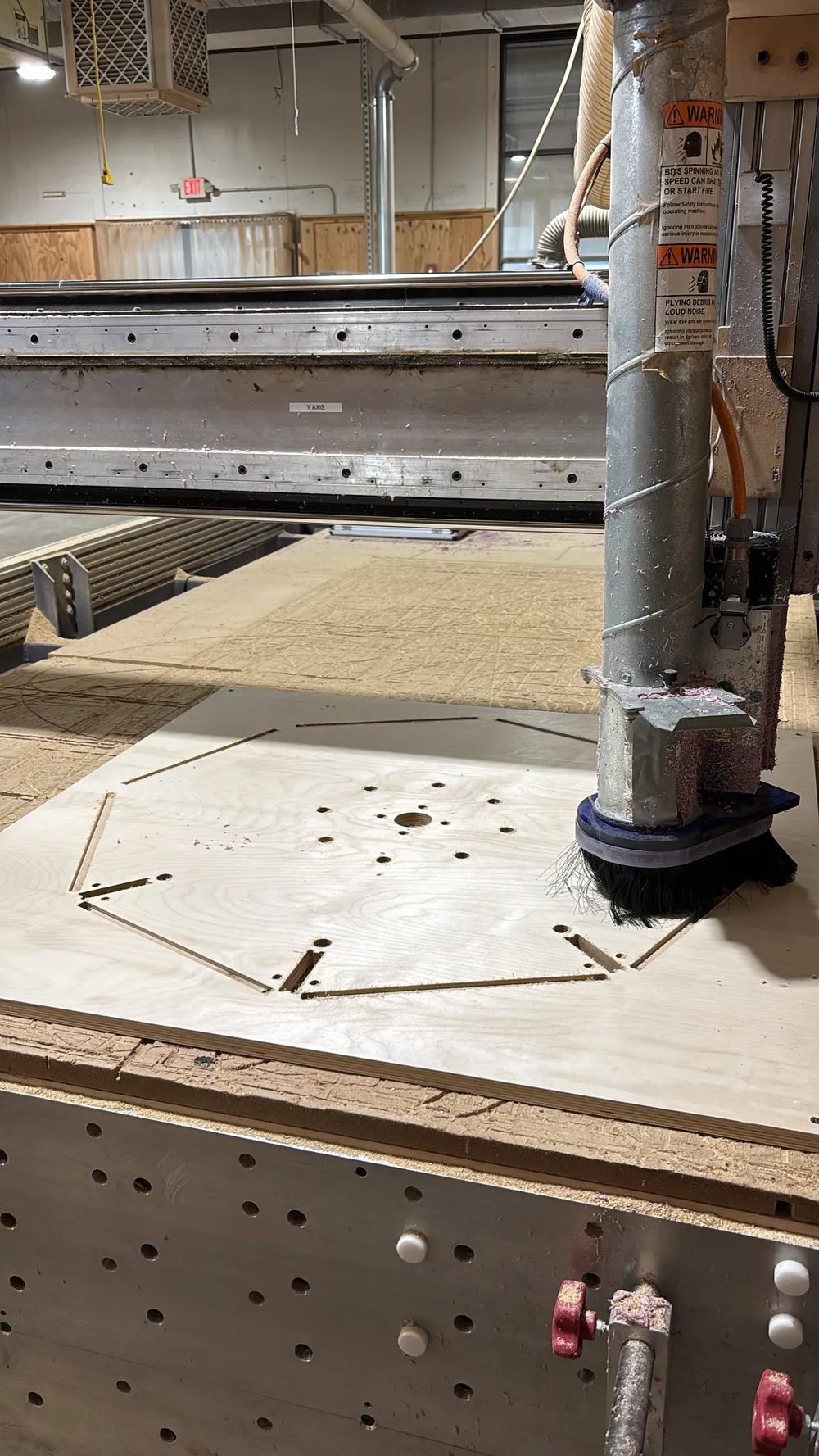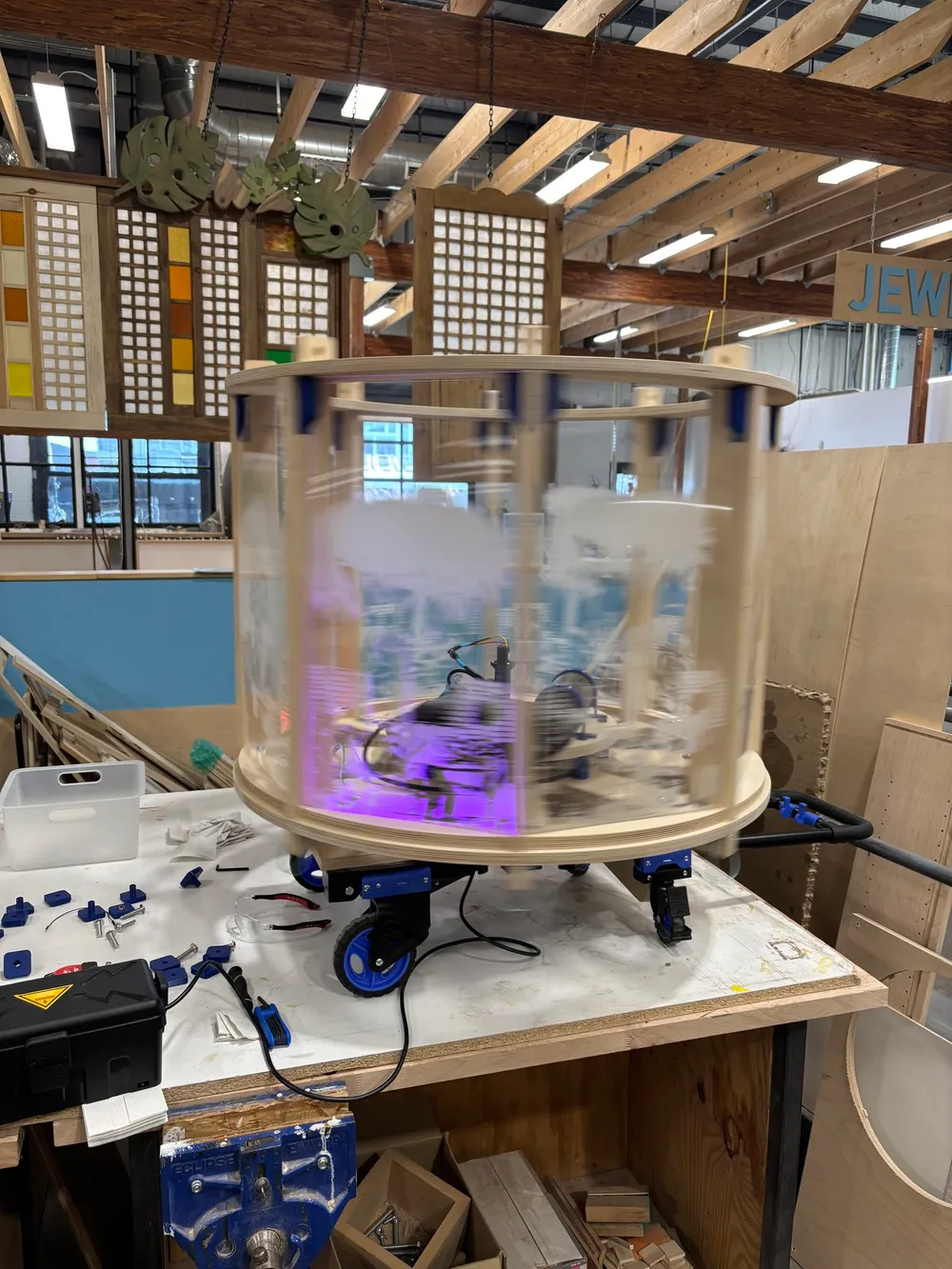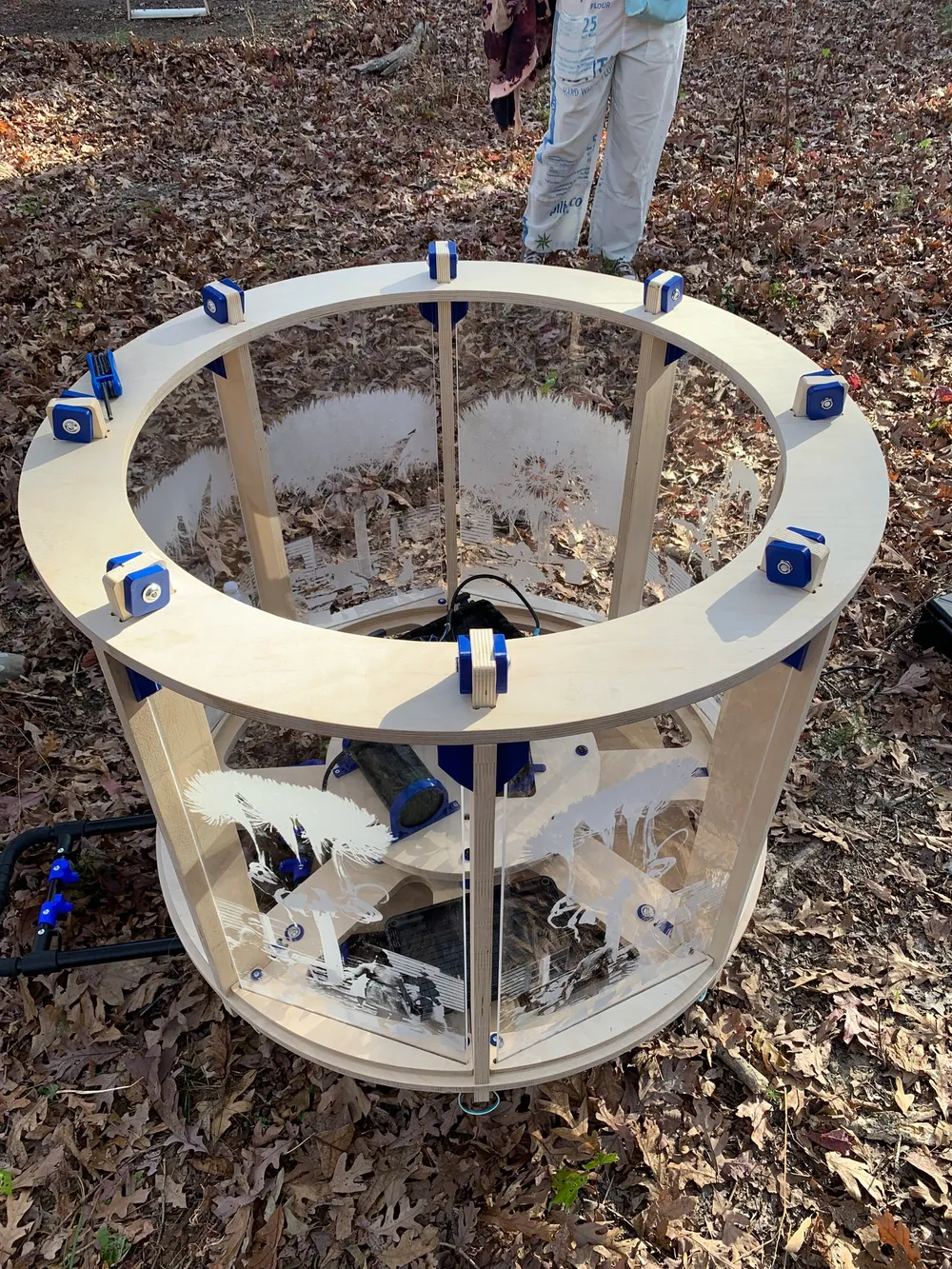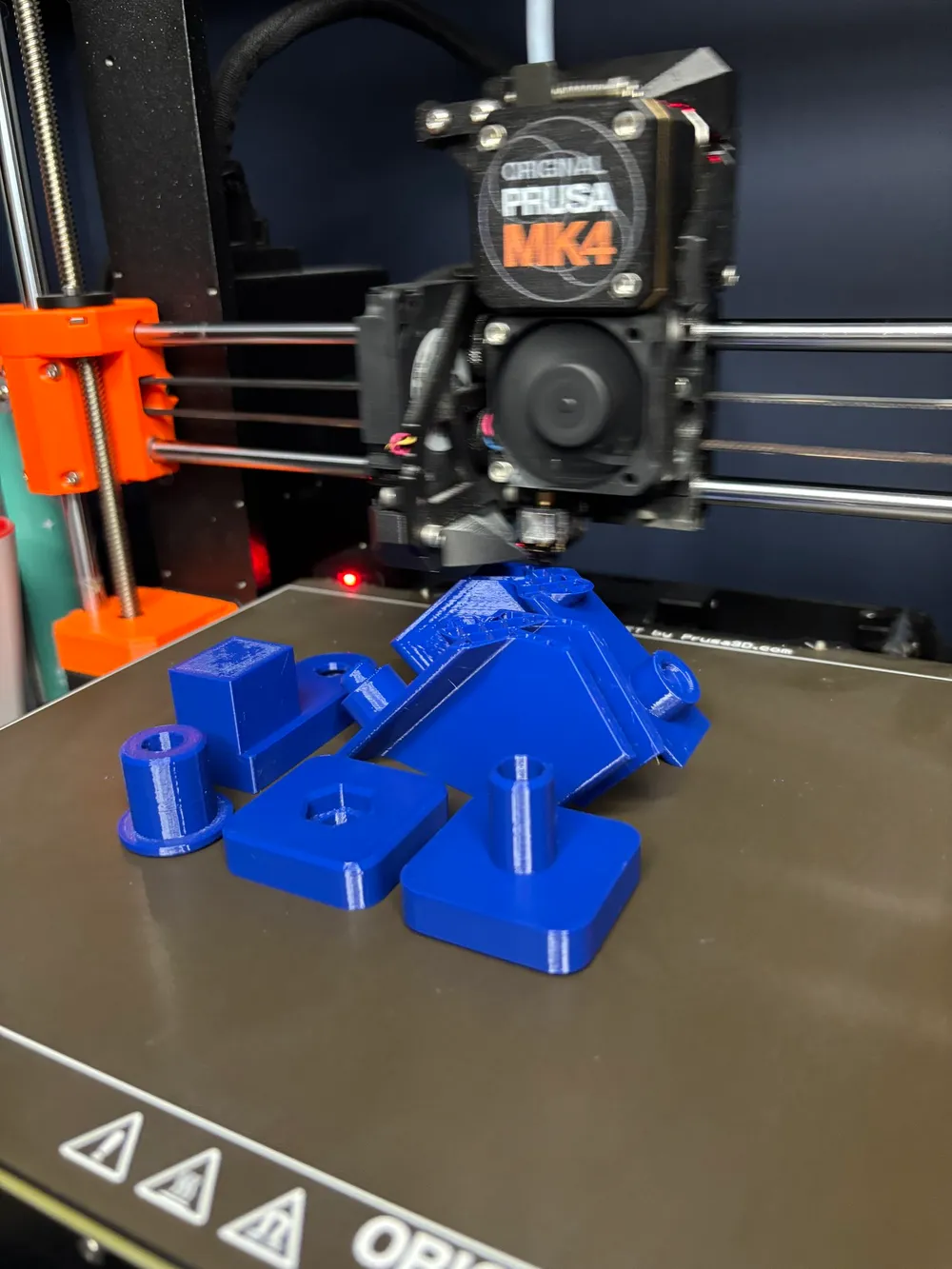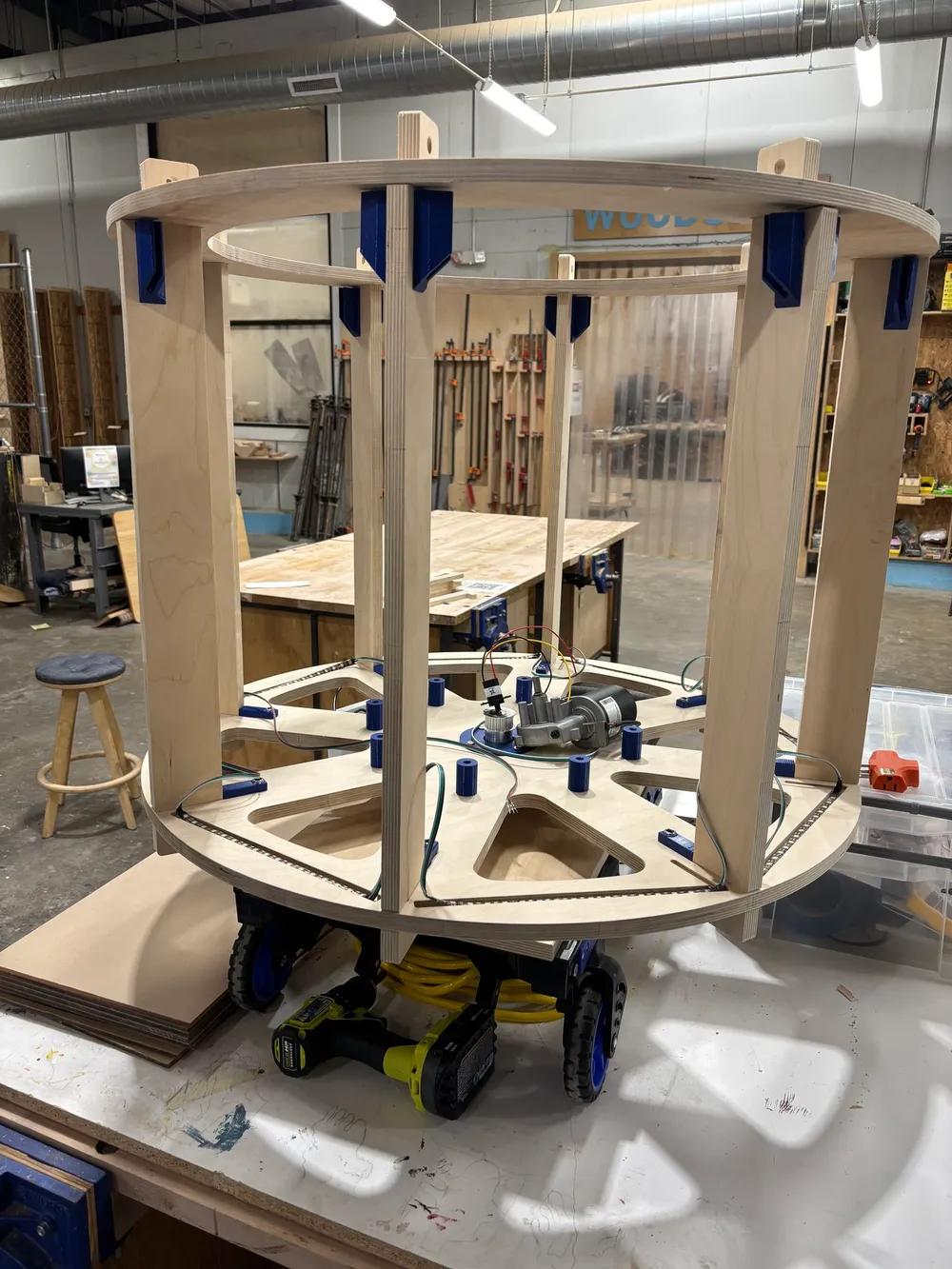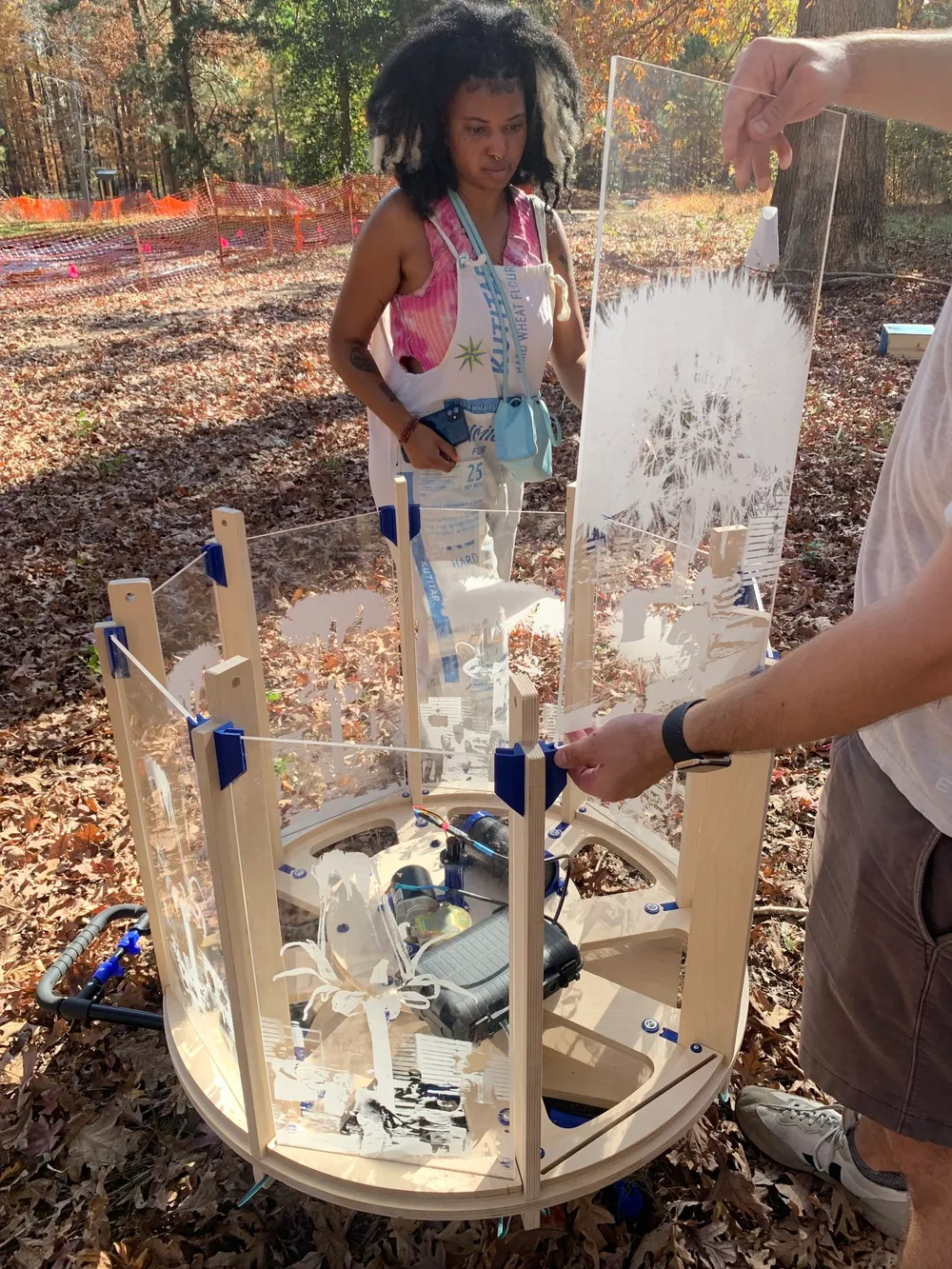InLight 2024: Grounds for Clearing
Yannick Lowery and Qiaira Riley partnered to create an installation for an outdoor, at-night, light-based contemporary art exhibition called InLight. This year’s exhibition, put on by 1708 Gallery in Richmond, Virginia, was held on the historic Pine Camp grounds. Today the space is one of the largest recreation centers in Richmond, but in 1936, the site was home to a Black infirmary. Yannick and Qiaira wanted to create something that leaned into the site’s history as a space for healing as well as place of leisure and play.
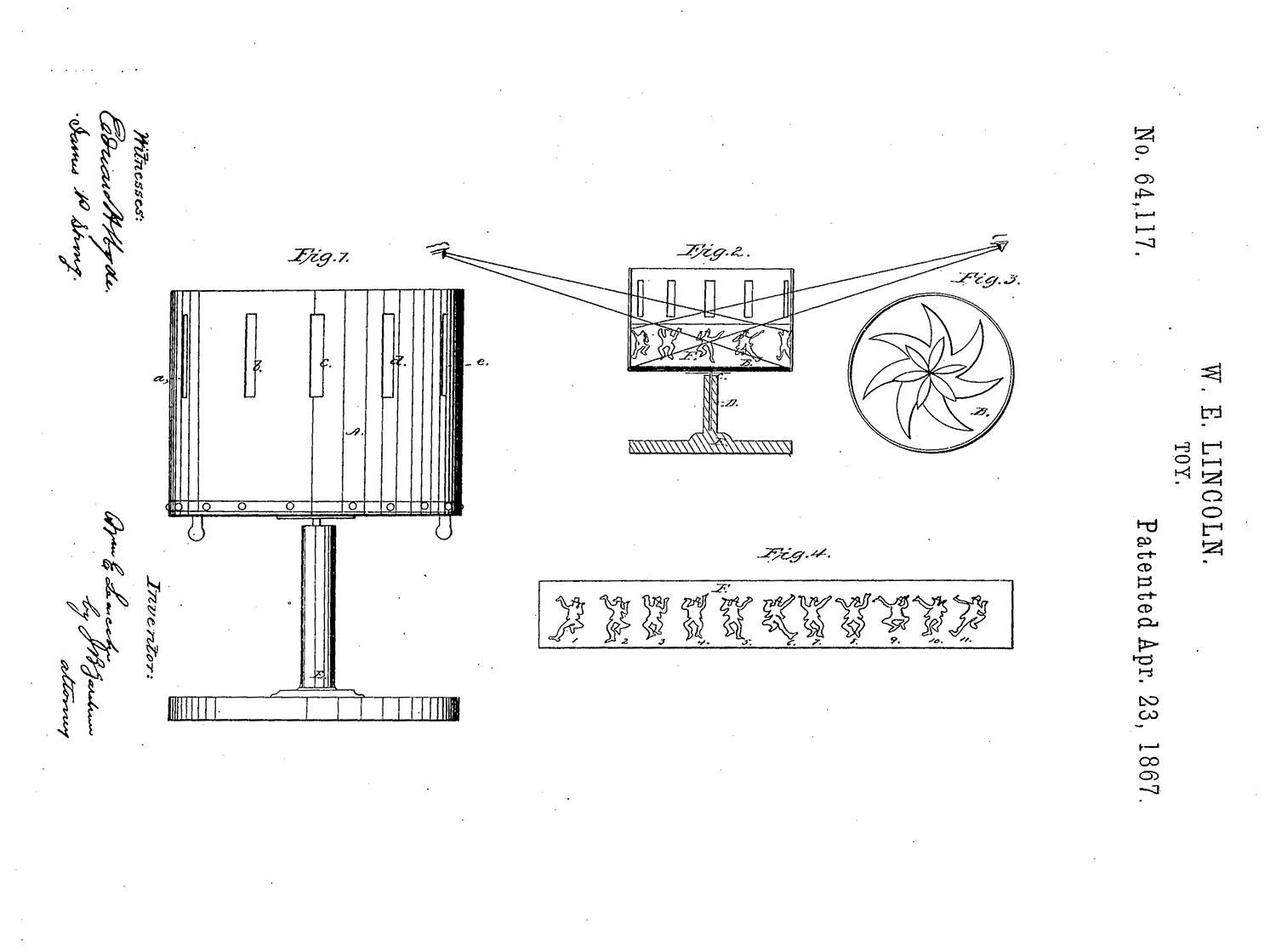
As a major part of the installation, they landed on creating a zoetrope — an old animation device that gives the illusion of motion.
They wanted it to reference a playground roundabout, featuring imagery of children playing Ring Around the Rosie, and a timelapse of a blooming dandelion, which has a history of being used in traditional medicine. The structure would include laser-engraved acrylic panels and LED lights.
“Stewart took my sketch and made it into a reality and then some.”
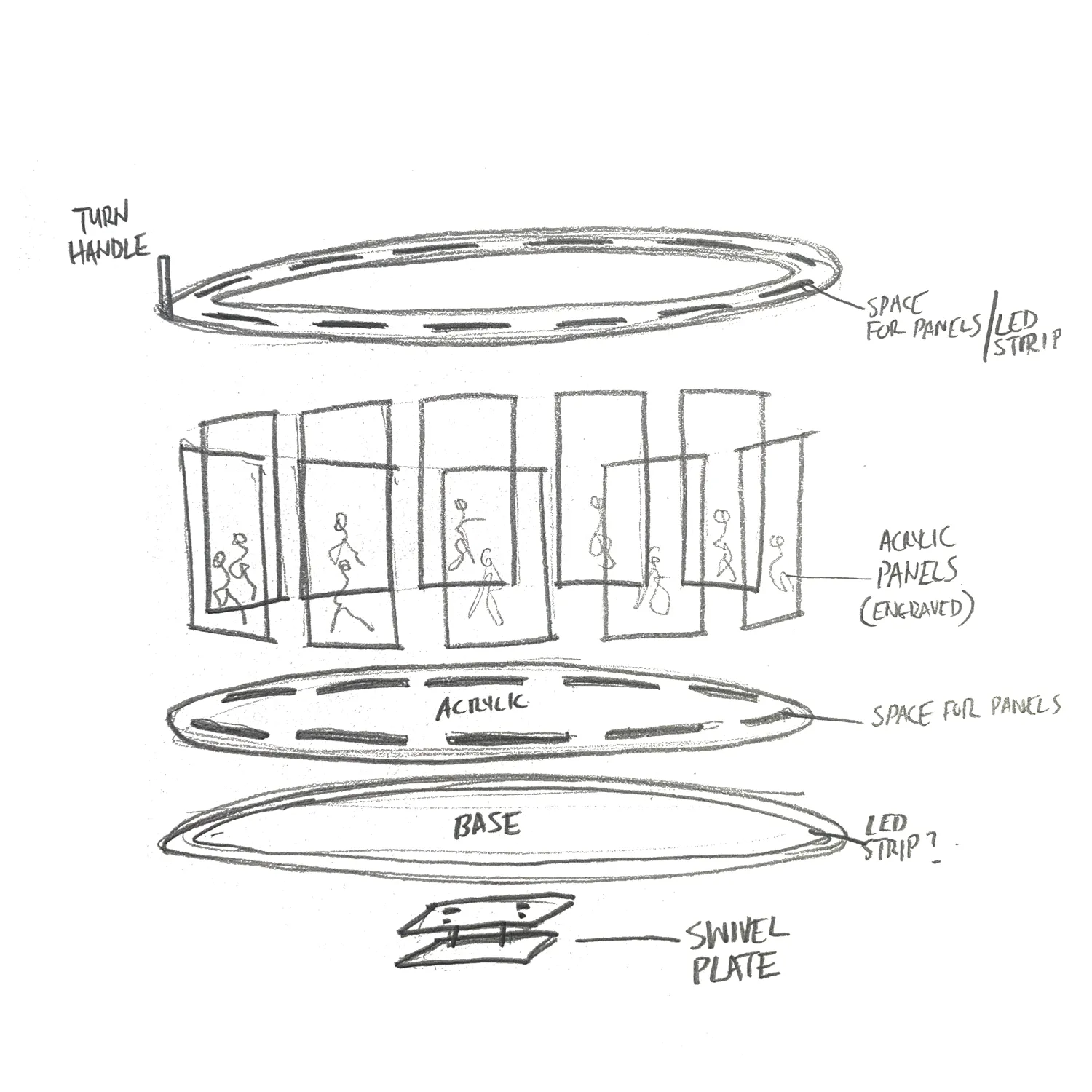
“During the exhibition, the responses from crowds were really incredible. It had a hypnotic-like effect on viewers.”
“Stewart was adaptable and also really straightforward about what was possible within the budget”
I explained what I was looking for with sketches and we did a lot of consulting on how it would work in theory. We got into making some solutions and Stewart really clarified what was possible. We decided that it needed to be motorized for the animations to show. Stewart was adaptable and also really straightforward about what was possible within the budget, including the need to scale the structure down in size. We went through a lot of iterations, refining and revising things when things didn’t work out. Stewart was easily able to pivot or offer alternative solutions. Throughout the project, we spoke pretty regularly and he gave detailed updates on what was happening.
“It’s one of those really proud moments for me in my career”
During the exhibition, the responses from crowds were really incredible. It had a hypnotic-like effect on viewers. Initially, they were really just spellbound, struck by the movement of it and the animation sequence. Then they would flood me with questions. We talked about the project and its concepts and the ideas we were aiming to illustrate and they would tell me their thoughts about it. There were at least seven other installations and people were saying this was their favorite one — that it was the most creative and the one that moved them the most. That’s overwhelming and humbling. I wish that Stewart was there to receive some of that praise, because a lot of it is due to him. It’s one of those really proud moments for me in my career, bringing something to life that I thought about, while working collaboratively.
“This experience opened a new door for what is possible”
There’s a lot of momentum around this project and interest in bringing it into different cities and exhibitions. I’m excited about working with Stewart again and potentially even building bigger versions of this project. This experience opened a new door for what is possible for my practice even beyond this project and gives me a newfound optimism for what I’m capable of. This is the first time I’ve worked with a fabricator and this idea of introducing electrical components or machinery into visual art was completely foreign to me.
I have been exposed to a different way of art making. I think this gives me more tools to use in my arsenal and it’s opened up an entirely different way of looking at creating collaboratively, which is really exciting. I’m thinking about ways that I can expand what I’ve done in almost a different language or a different level of communicating.
I would highly recommend Stewart — this couldn’t have been done without him. He’s highly professional, has great ideas, and he’s a wiz engineering-wise. He has an innovative and creative balance that gives him an edge in creating really beautiful things. He has so many different areas of expertise that I’m surprised he’s not just an artist on his own, but it’s great that he supports artists in this way. A lot of times artists have the idea, but you need someone who can actually put things together. If someone needs advice or fabrication or insight into what’s possible, I think Stewart would be great for that.
I created a 3D model of the installation in Fusion, then manufactured most of the parts using a 3D printer and CNC machine. The animation frames are laser-etched into acrylic panels, and the whole carousel rests on a bearing and a custom machined aluminum spindle.
The carousel is rotated by a 12V motor, and uses Hall effect sensors wired to an Arduino-like microcontroller to calculate its position and speed.
The acrylic panels are lit from the edges by LED strips, controlled to flash on and off at the right times to give the illusion of two different colored animations in stationary windows offset by 90 degrees.
